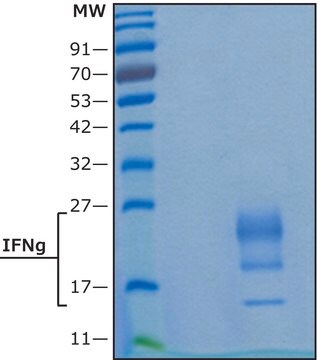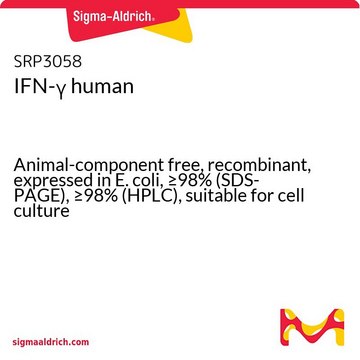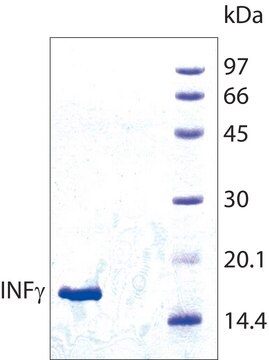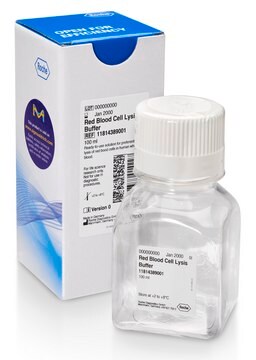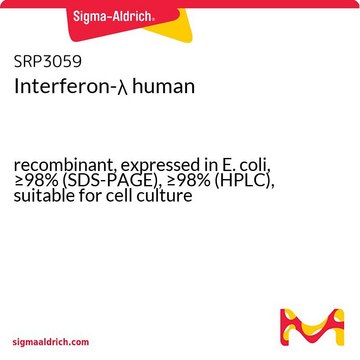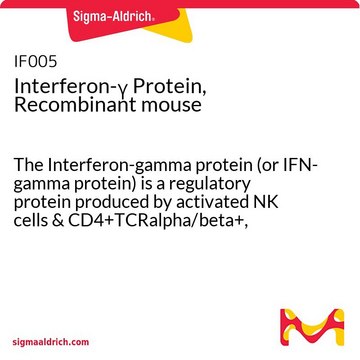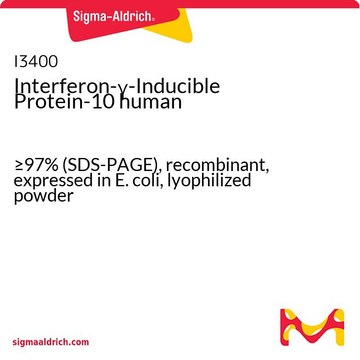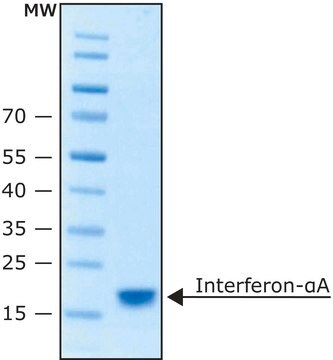11040596001
Roche
Interferon-γ, human (hIFN-γ)
from human, 95% (SDS-PAGE), solution, >2 x 10^7 U/mg
Synonyme(s) :
SYBR, qPCR
About This Item
Produits recommandés
Source biologique
human
Niveau de qualité
Produit recombinant
expressed in E. coli
Description
recombinant (E. coli)
Pureté
95% (SDS-PAGE)
Forme
solution
Puissance
<0.05 ng/mL EC50
Activité spécifique
>2 x 10^7 U/mg
Poids mol.
16,700 Da
Conditionnement
pkg of 100,000 U (5 μg, 1 ml)
Fabricant/nom de marque
Roche
Conditions de stockage
avoid repeated freeze/thaw cycles
Impuretés
<0.1 EU/μgtested (LAL test)
Numéro d'accès UniProt
Température de stockage
−20°C
Informations sur le gène
human ... IFNG(3458)
Description générale
Spécificité
Application
Actions biochimiques/physiologiques
Qualité
Endotoxin level: <0.1EU/μg (LAL-test), <10EU/ml (LAL-test)
Note: 1EU corresponds to 0.1ng
Séquence
Définition de l'unité
Forme physique
Notes préparatoires
Storage conditions (working solution): Stability in culture: Activity is present for at least 18 hours in culture medium.
Autres remarques
Code de la classe de stockage
12 - Non Combustible Liquids
Classe de danger pour l'eau (WGK)
WGK 1
Point d'éclair (°F)
No data available
Point d'éclair (°C)
No data available
Certificats d'analyse (COA)
Recherchez un Certificats d'analyse (COA) en saisissant le numéro de lot du produit. Les numéros de lot figurent sur l'étiquette du produit après les mots "Lot" ou "Batch".
Déjà en possession de ce produit ?
Retrouvez la documentation relative aux produits que vous avez récemment achetés dans la Bibliothèque de documents.
Les clients ont également consulté
Notre équipe de scientifiques dispose d'une expérience dans tous les secteurs de la recherche, notamment en sciences de la vie, science des matériaux, synthèse chimique, chromatographie, analyse et dans de nombreux autres domaines..
Contacter notre Service technique